Walks
The walking year
A list of some of the wonderful sights you can see if you keep your eyes open. Why not print off the page and give it to the kids to tick off as they spot them?
December and January
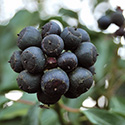
Ivy berries. There is some life this time of the year - if you look for it.
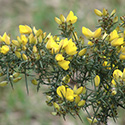
There's also colour this time of the year. This picture could be featured in any month, as gorse flowers all year round, but its yellow flowers are especially good for giving colour to the countryside at this fairly dormant time of the year.

May not be very obvious, but beautiful if you find it, there are some wonderful and sometimes colourful fungi. Look on dead and fallen trees.
Febrary
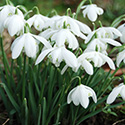
One of the first flowers of the year is the snowdrop. After the winter, it's a very welcome sight.
March
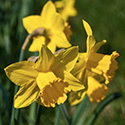
A colourful month, crocuses and daffodils brighten things up. Daffs will usually be limited to where they've been planted, but this often includes some roadsides.
April
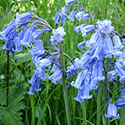
This well-known flower, the bluebell produces carpets of blue in wooded areas.
May
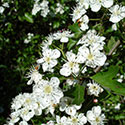 May blossom is the flower of the hawthorn. Unlike its cousin blackthorn, the hawthorn comes out in leaf well before flowering. It has been out in leaf for a while and the flowers begin to appear just before the start of May. Some hedges explode into white making the hedges look as if they've had a dusting of snow.
May blossom is the flower of the hawthorn. Unlike its cousin blackthorn, the hawthorn comes out in leaf well before flowering. It has been out in leaf for a while and the flowers begin to appear just before the start of May. Some hedges explode into white making the hedges look as if they've had a dusting of snow.
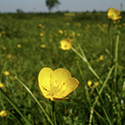 Buttercups speckle a meadow with small yellow flowers.
Buttercups speckle a meadow with small yellow flowers.
June
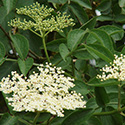 Elderflower - visible for most of the month. Looks and smells beautiful. Deep fry them in batter, make cordial. Make wine.
Elderflower - visible for most of the month. Looks and smells beautiful. Deep fry them in batter, make cordial. Make wine.
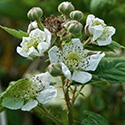 Blackberry flowers grow on the humble bramble. Not long until they turn into the most delicious free fruit.
Blackberry flowers grow on the humble bramble. Not long until they turn into the most delicious free fruit.
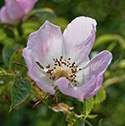 Dog-rose or wild rose - the flowers are less complex and beautiful than their cultivated cousins, but they add beautiful decoration on our hedges during summer. The petals have many uses - wine, brandy, sweets and even jam.
Dog-rose or wild rose - the flowers are less complex and beautiful than their cultivated cousins, but they add beautiful decoration on our hedges during summer. The petals have many uses - wine, brandy, sweets and even jam.
July
 Beautiful purple colour and attractive to bees. Symbol of Scotland but there are many kinds of thistle and they grow all over the UK. Flowers appear in summer and turn into fluff in the autumn.
Beautiful purple colour and attractive to bees. Symbol of Scotland but there are many kinds of thistle and they grow all over the UK. Flowers appear in summer and turn into fluff in the autumn.
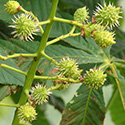 the flowers have gone, now we see the small and soft spikes on the horse chestnuts (conkers).
the flowers have gone, now we see the small and soft spikes on the horse chestnuts (conkers).
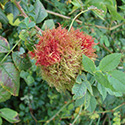 This very odd Robin's Pincushion grows on the dogrose or wild rose. I think it's an insect that damages the rose, provoking it to grow this mossy mass, which the insect lives in.
This very odd Robin's Pincushion grows on the dogrose or wild rose. I think it's an insect that damages the rose, provoking it to grow this mossy mass, which the insect lives in.
August
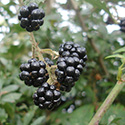 The first blackberries appear. The ones at the end of the stalks are the sweetest and appear first. Berries continue to ripen through to October.
The first blackberries appear. The ones at the end of the stalks are the sweetest and appear first. Berries continue to ripen through to October.
 Honeysuckle flowers are beautiful and adorn our hedgerows in August.
Honeysuckle flowers are beautiful and adorn our hedgerows in August.
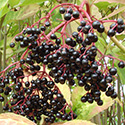 Elderberries are not pleasant to eat, but great for wine.
Elderberries are not pleasant to eat, but great for wine.
September
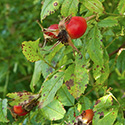 Rosehips start to ripen. They're available and usable well into the winter, and are better when riper. Use them to make wine or syrup.
Rosehips start to ripen. They're available and usable well into the winter, and are better when riper. Use them to make wine or syrup.
 Apples tend to be domesticated but you will find them growing wild and they'll be ripe in autumn. A tasty treat.
Apples tend to be domesticated but you will find them growing wild and they'll be ripe in autumn. A tasty treat.
October
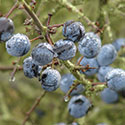 Sloes are not a pleasant fruit to eat, but prick and soak in gin and sugar for a delicious Christmas drink.
Sloes are not a pleasant fruit to eat, but prick and soak in gin and sugar for a delicious Christmas drink.
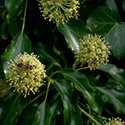 Looking like pom-poms covering hedges and wrapped around trees, these ivy flowers will turn into balls of black berries after Christmas.
Looking like pom-poms covering hedges and wrapped around trees, these ivy flowers will turn into balls of black berries after Christmas.
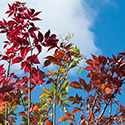 Look on the trees and hedges, and under your feet for some amazing colours - red, orange, yellow, green.
Look on the trees and hedges, and under your feet for some amazing colours - red, orange, yellow, green.
November
 A very nice Autumn treat, you'll find sweet chestnuts on the ground, slit the skin, grill them, peel them and enjoy.
A very nice Autumn treat, you'll find sweet chestnuts on the ground, slit the skin, grill them, peel them and enjoy.
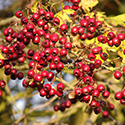 Still some colour around, particularly these bright red hawthorn berries. Can be made into jam.
Still some colour around, particularly these bright red hawthorn berries. Can be made into jam.
